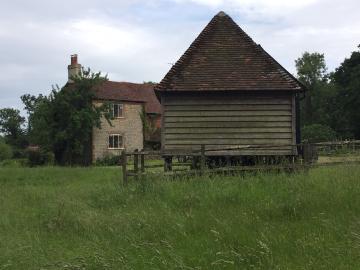Saxon
410-1066
Land at 12 Guildown Avenue, Guildford
Guide to Researching the Landscape of Surrey in the Middle Ages

This guide is a collection of links to online resources useful for the study of medieval landscapes in the historic county of Surrey, put together by Rob Briggs, Historic Environment Record Officer for Surrey County Council. It acts as a follow-up to a Surrey Archaeological Society study day about the medieval landscape in March 2020, with a focus not on medieval towns and villages but on the surrounding manors, farms, fields and other rural institutions.
Anglo-Saxons or the not so Dark Ages
The Anglo-Saxons dominated much of England from 410-1066. Mercenaries had for many years fought in the Roman army in Britain so they were not total strangers to the island. Discover what life was like for the people who gave Ewell its name, which means 'the people who live at the start of the river'.
£5 per child
For details contact: dbrooks@epsom-ewell.gov.uk
Medieval Studies Forum Meeting and AGM
There will be a half day meeting of the Forum held at St Catherine's Village Hall, Guildford at which there will be a number of presentations relating to the recent and ongoing research interests of members with talks by Lucy Quinnell, Mary Alexander and David Calow.
Anglo-Saxons Workshop
There are two sessions: 10.30-12.00 and 13.00-14.30. £8 per child with £1 sibling discount.
Learn about the Anglo-Saxons and Vikings and what great crafts people they were. Be inspired to make your own Saxon artefact.
Spaces are limited to booking essential. Contact: dbrooks@epsom-ewell.gov.uk


